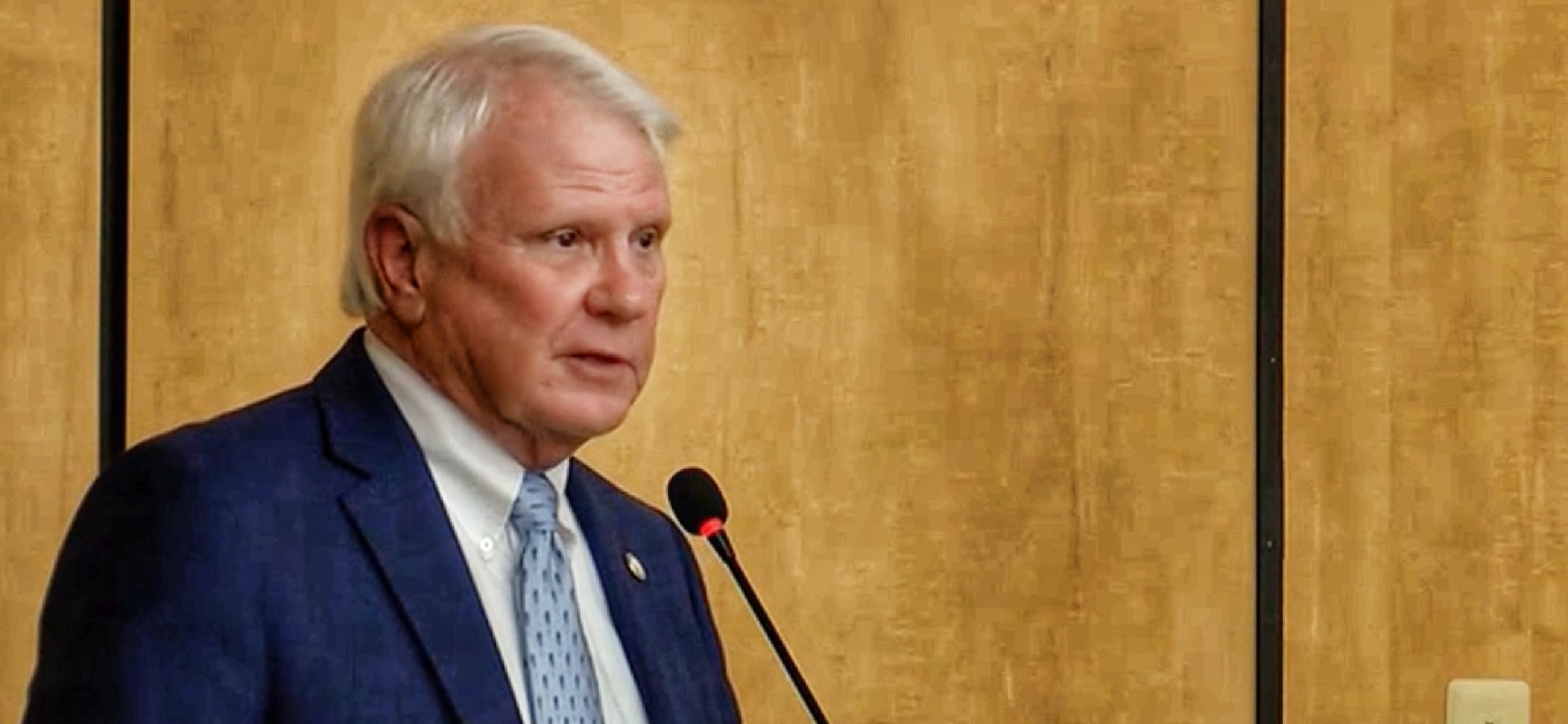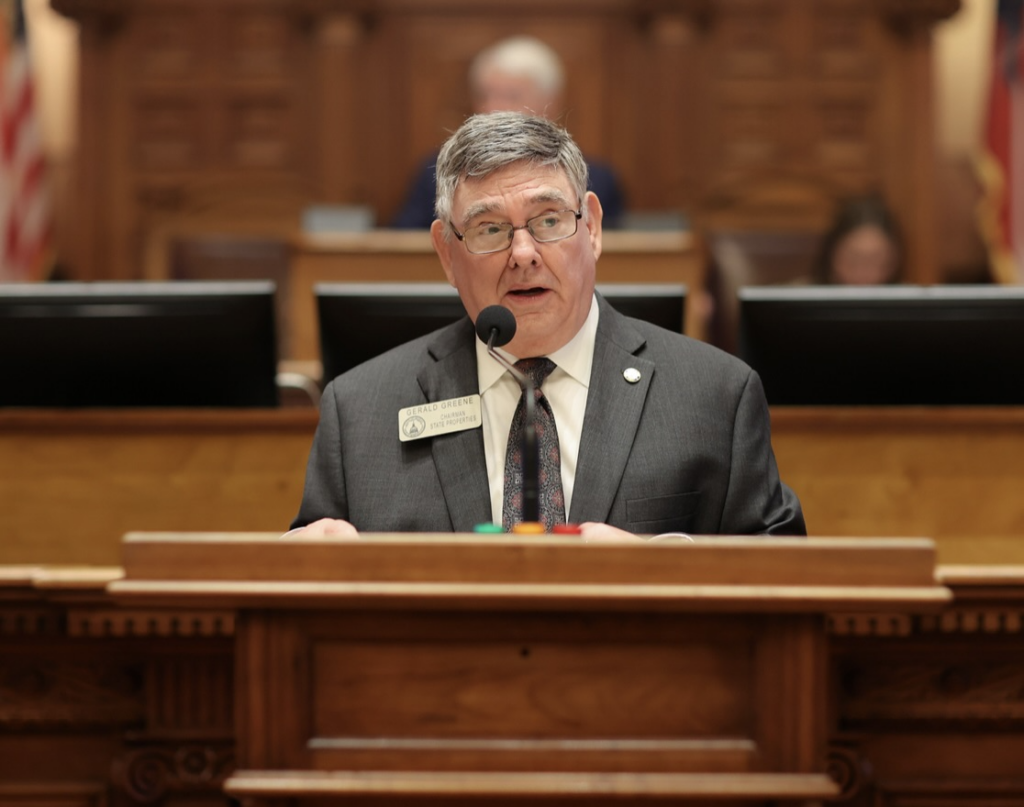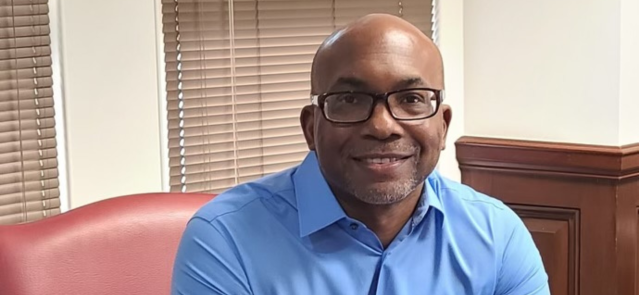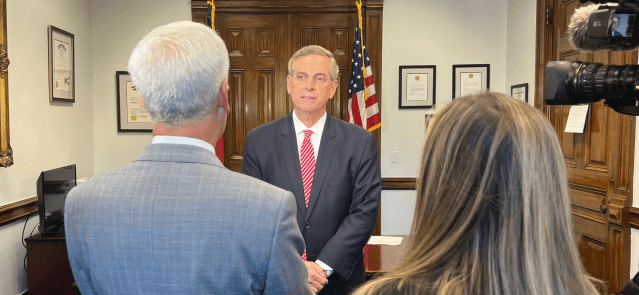Stay ahead of the curve as a political insider with deep policy analysis, daily briefings and policy-shaping tools.
Request a DemoLawmakers scramble for ideas on how to improve health care in rural Georgia

House Speaker Jon Burns addresses the House Rural Development Council at Georgia Southern University in Statesboro. (Credit: Office of the Speaker)
The Gist
The challenges in getting health care to rural Georgians are myriad. Hospital closings; shortages of doctors, dentists, nurses and mental health professionals; shorter life spans and higher rates of chronic illnesses and uninsured residents are just a partial list of the roadblocks residents face.

On Wednesday, state lawmakers heard from experts from across the health care spectrum about those challenges and how to deal with them.
“We’re at a crossroads in our health crisis in the state of Georgia,” Rep. Gerald Greene, co-chairman of the House Rural Development Council, told State Affairs.
The council is holding two days of hearings at Georgia Southern University in Statesboro. Thursday’s session focuses on child welfare and mental health, and juvenile justice.
What’s Happening
Rural Georgians are getting older, have few medical care options and spotty health care coverage. Those problems prompted the late House Speaker David Ralston and other state lawmakers to create the House Rural Development Council in 2017. The bipartisan council’s main goal is to focus on the needs and concerns of Georgia’s 120 rural counties.
Among those rural counties, 73 were in the bottom half for health outcomes and 74 were in the bottom half for health factors, Cindy Zeldin, vice president of Health Policy and Government Affairs at Georgia Health Initiative, told the council.
Rep. Penny Houston, an ex-officio member of the council, offered a pragmatic solution. “We’ll never get a hospital in every county. I don’t think the people realize how few people we have in some of these counties,” said Houston, who lives in Nashville, a community of just under 5,000. “If we’re ever going to get service, we’re going to have to combine some rural counties because you cannot run a rural county with 3,000 people. I’m sorry, you can not.”
Measuring Success
Nonetheless, council members heard a number of initiatives making inroads to improving access to health care in rural Georgia. Among them:
The Two Georgias Initiative. This is a five-year, $10 million commitment in 11 rural communities. The program, (formerly the Healthcare Georgia Foundation ), enables communities to identify health issues they want to work on and then lead their own efforts locally. The Two Georgias program was created by the Georgia Health Initiative (formerly the Healthcare Georgia Foundation ). “What the foundation provided was structure, funding and resources to support the work that they decided was most important,” Zeldin said.
Rural Hospital Tax Credit. Last year, lawmakers expanded the tax credit to $75 million from $60 million. The state still has more than $2 million to be used before the credit ends in December 2024. The credit has helped numerous hospitals buy new, state-of-the-art equipment because of the tax credits. The credits have also helped hospitals to establish new programs, such as the radiation oncology program at Colquitt Regional Medical Center. Patients used to have to drive over 200 miles for radiation services, Anna Adams, executive vice president of the Georgia Hospital Association said.
More doctors and workers. Augusta University’s Medical College of Georgia enables students to complete medical school in three years instead of four, Dr. David Hess, dean of the medical college said. Peach State Scholars Program pays tuition for the students if they practice a primary care specialty in an underserved area in Georgia, after finishing a residency program in the state.
Officials at health care provider Kaiser Permanente urged the council to consider a program used in Virginia where military veterans with medical skills are placed in communities in need of health care professionals. Virginia has hired 564 vets — with additional post-military training — since launching its program in 2017.
More telehealth. Patients who used to have to go to large area hospitals for medical services now are staying in their communities with the help of telehealth programs. A hospital in Candler County used to see four to five patients a day, but telehealth has allowed it to increase that number to 20-25.
Why It Matters
The hearings follow a state Chamber of Commerce report released this month that found 80% of new jobs in Georgia and $20 billion of investments went to rural communities in the last year.
“The health crisis that we have in the rural areas is something that is a problem to all the rural legislators and to the state as well,” Greene told State Affairs.
The council is one of three legislative subcommittees meeting in Statesboro this week. The meetings will help lawmakers devise recommendations and solutions to present to the Legislature when it reconvenes in January. The House Study Committee on Fishing Access to Freshwater Resources, and the House Formula Funding & Program Access and Delivery Ad Hoc Committee are the other committees meeting in Statesboro.
What’s Next?
This week’s Rural Development Council gathering is the second of three key meetings it’s slated to hold. The council’s next meeting will be in Athens in November. “I look forward as we get ready to go into the 2024 session in just a very few months to receiving and reviewing this council’s recommendations at the end of this year,” House Speaker Jon Burns told the group Wednesday.
Health care in rural Georgia: By the numbers
Available doctors and hospitals
Physician per 100,0000 residents (statewide): 232
Physician per 100,000 resident ratio (non-rural): 217
Physicians per 100,000 residents (rural counties): 73
Counties designated as having a shortage of primary care physicians: 89
National ranking in active doctors and primary care physicians: 40th
Rural hospitals in Georgia at risk of closing: 26
Georgia’s uninsured
Uninsured adults (18-65 years old): 18%
Uninsured adults in nonrural counties: 18.5%
Uninsured adults in rural counties: 21%
Uninsured children (under 19 years old): 6.6%
Uninsured children in nonrural counties: 6.6%
Uninsured children in rural counties: 7.7%
Sources: Georgia Health Initiative; Georgia Council on Aging; Georgia Board for Healthcare Workforce, 2020; Georgia Board for Physician Workforce, HRSA; Georgians for a Healthy Future.
Have questions, comments or tips? Contact Tammy Joyner on X @lvjoyner or at [email protected].
X @StateAffairsGA
Instagram@StateAffairsGA
Facebook @StateAffairsGA
LinkedIn @StateAffairs
Header image: House Speaker Jon Burns addresses the House Rural Development Council at Georgia Southern University in Statesboro. (Credit: Office of the Speaker)
Newly minted Senate Minority Leader Harold Jones II: ‘I’m not the typical back-slapping politician’
Nearly 10 years into legislative life, Sen. Harold Jones II wouldn’t change anything about the experience. “I love every minute of it. Even when I hate it, I love it,” the 55-year-old Augusta Democrat told State Affairs. Come January, Jones will add another role to his legislative duties: Senate minority leader, a job held for …
Gov. Kemp calls on state agencies to be fiscally restrained amid record $16.5B surplus
The Gist Gov. Brian Kemp asked the state’s 51 government agencies for continued fiscal restraint when drafting their amended fiscal year 2025 and 2026 budgets. Most agencies adhered to his request even as the state’s general fund surplus hit a record $16.5 billion last month. Forty-five agencies, excluding state courts, followed the governor’s instructions to …
Georgia defies bomb threats as election chief declares a “free, fair and fast” vote amid record turnout
ATLANTA – Despite dealing with over 60 bomb threats, Georgia’s election chief said Tuesday the state’s general election went smoothly. Georgia had a record turnout with nearly 5.3 million people voting, Secretary of State Brad Raffensperger told reporters. Election officials in the state’s 159 counties have until 5 p.m. to certify votes. “We had a …
In the (state)house: Meet the newest members of the Georgia legislature
When lawmakers reconvene at the state Capitol on Jan. 13, there’ll be a cadre of new faces in the 236-member Georgia General Assembly, one of the nation’s largest state legislatures. All 236 statehouse seats were up for election this year. Most candidates ran unopposed. Incumbents in contested races easily kept their seats, with the exception …




